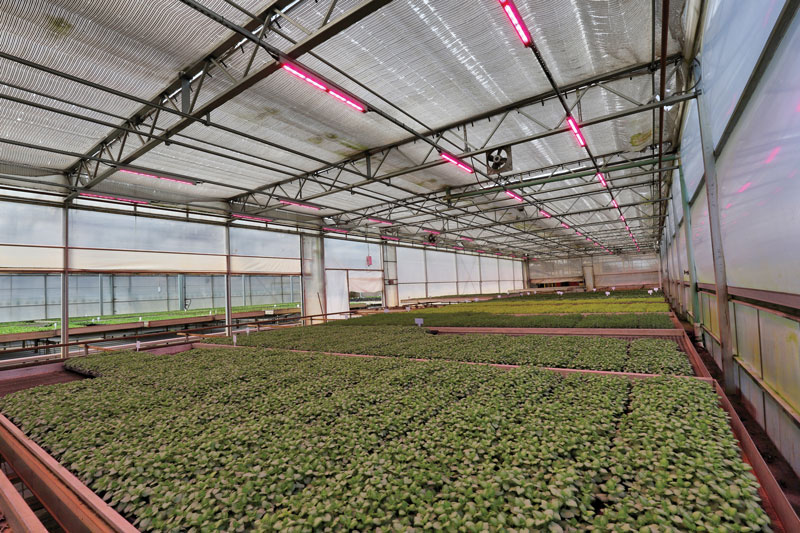6/1/2021
More Turns = More Return
Jennifer Zurko
Photography by Chris Beytes

While we were at Hampshire Farms in Hampshire, Illinois, for a video project, we heard that they’d just installed LED lights in their propagation houses. Of course, we wanted to take a peek and Jason Fatten, Director of Production & Operations for Hampshire Farms, obliged.
In October 2020 and this past January, the big box perennials grower had Signify put in 200 of their high-intensity fixtures in houses used for seed and cutting propagation. As you can see, the lights are installed at the truss level, and because they’re 277 volts versus regular 240-volt fixtures, it’s the ideal height. The spectrum is red-blue-light blue, which Jason said the technical reps at Signify said was the best combination for their perennials.
“We explained what we do, they came out here, measured our square footage and came up with a light plan of where we needed to have the fixtures,” he said. As for the actual output, Jason said the LEDs are putting out about 80 to 100 extra micromoles of light, which is already paying noticeable dividends not even a year into it.
“We’re propagating year round and we’re finding that the spectrum of these lights is helping to improve germination, rooting and quicker growth,” he explained. “With the higher intensity, we can put the lights a little bit higher and get a better uniform spread. Certain crops in propagation here, we’ve got the crop time cut in half.”
Jason can control all of the lights from his smartphone through their Argus system, but most of the time, the parameters are already set based upon the amount of light outside, so he doesn’t have to change it very often.
“On a nice bright day, they’ll shut themselves off, but if you have a not-so-nice day during the winter, they’ll be on all day long. Right now, we’re running these on a 13-hour photoperiod day.” Jason said typically their unrooted cuttings are under the LEDs for seven to 14 days before they get transitioned into other areas to harden and finish.
Jason admitted that they’d been discussing adding LED lights to their propagation houses for a while, but it wasn’t until recently that they just decided to jump in with both feet. And so far, he’s been really pleased with the results. Some crops are finishing faster than others, but they’ve seen an overall improvement in crop time on everything.
“With more plants being produced per square foot in here and with the capital investment on the lights, you get more return on that square footage,” explained Jason. “We haven’t done the math, but we figure they’ve probably already paid for themselves just by being able to speed everything up, have more crops per turn and more turns per year.” GT